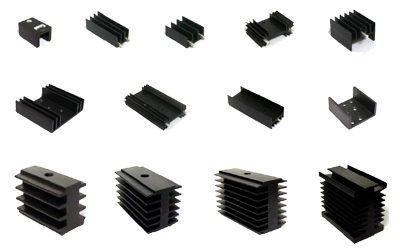Grayson is a shopping aficionado who loves to share information about the best deals and steals he finds. He's always on the lookout for a bargain, and he loves to help others find great deals, too. You can always count on Denise to give you the inside scoop on where to shop and save money.

Choosing the proper CPU heat sink is crucial when building a custom computer or upgrading an existing one to keep it cool and functional. Finding the right heat sink for your needs can be difficult because there are so many options on the market. When building a custom computer or upgrading an existing one, one of the key questions is how does a heat sink work to keep your CPU cool. In this article, we’ll look at important things to keep in mind when choosing a CPU heat sink.
Cooling Cooling Potential
The effectiveness of the cooling system should be taken into account when selecting a CPU heat sink. The main job of a heat sink is to remove heat from the CPU, and different heat sinks have different cooling capacities.
The size of the heat sink and the kind of fan it employs are the two main factors to consider when assessing a heat sink’s cooling performance. Due to their larger surface area for heat dissipation, larger heat sinks typically offer better cooling performance. However, installing larger heat sinks can be more complex, and they might not fit in smaller computer cases.
Compatible Ability
When selecting a CPU heat sink, compatibility should be taken into account too. It’s critical to confirm that the heat sink you select is compatible with the socket type of your CPU because not all heat sinks are compatible with all CPUs.
LGA, PGA, and BGA are a few of the different CPU socket types. Intel processors use the most popular socket type, called LGA (Land Grid Array).
Make sure to read the manufacturer’s specifications before purchasing a CPU heat sink to make sure it fits the socket type of your CPU. You should also make sure that the heat sink is the proper size for the motherboard and case of your computer.
Overclocking Assistance
You should choose a heat sink that supports overclocking if you intend to overclock your CPU to increase performance. A heat sink made specifically for overclocking will offer better cooling performance and help your CPU last longer because overclocking produces more heat than operating a CPU at its default clock speed.
Build Quality
The built quality of the CPU heat sink should be taken into account as the third factor. In addition to better cooling performance, a well-built heat sink will last longer and be less likely to harm your computer.
There are several things to consider when assessing the build quality of a heat sink.
- Check to see that the heat sink is made of superior materials, like copper or aluminum.
- Make sure the motherboard and CPU are both firmly attached to the heat sink.
- Be sure to look into any extra features the heat sink might have, like integrated heat pipes or thermal grease.
These features can facilitate installation and boost the heat sink’s cooling capacity.
Conclusion
Your computer must have the proper CPU heat sink in order to run smoothly and cool. Keep in mind compatibility, cooling effectiveness, and build quality when choosing a heat sink. You can find a heat sink that will offer excellent cooling performance and aid in extending the life of your computer by taking these considerations into account.
